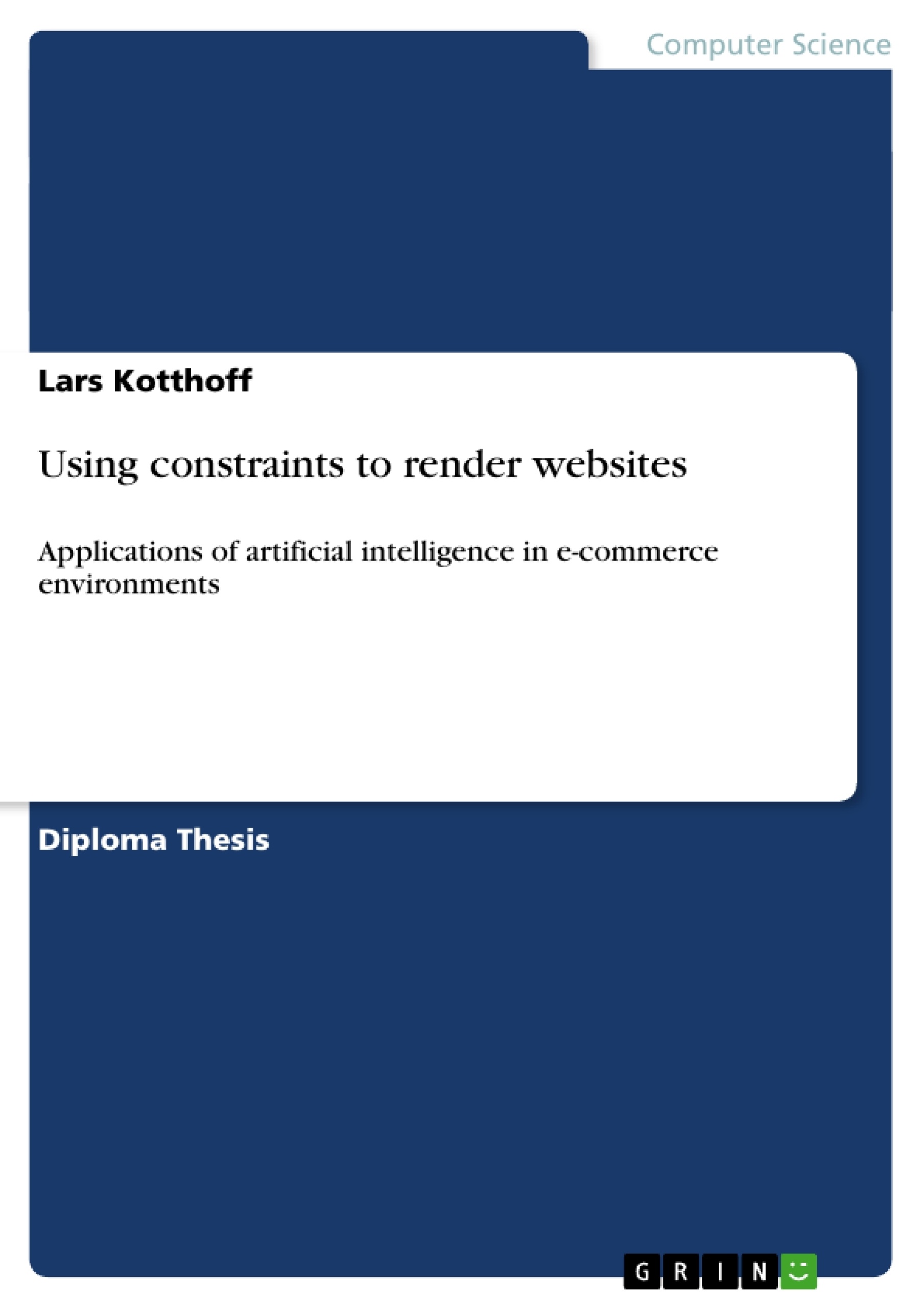Constraint programming is an area of Artificial Intelligence which has many applications. This thesis applies its techniques to a new kind of problem - the rendering of online retailer websites.
First, in-depth introductions to constraint programming and the problem of
rendering a shop website will be given. A prototypical implementation of a
constraint problem solver and a system to solve and illustrate the problem will
be described.
The architecture of the prototypical implementation and specific features, algorithms, and design decisions will be detailed, analysed, and illustrated. An overview of related work both in the fields of constraint programming and website generation will be presented and existing technologies evaluated.
Features and concepts unique to this thesis, like real-time constraint satisfaction, will be introduced and discussed.
Finally, a comprehensive example will illustrate the problem, means of modelling it, and possible solutions. An outlook to future work and a summary conclude the
thesis.
Constraint Programming ist ein Teilgebiet der künstlichen Intelligenz mit vielen praktischen Anwendungen. Diese Diplomarbeit wendet die Techniken auf eine neue Art von Problem an - das Rendern von Webseiten von Internetshops.
Zuerst wird eine detaillierte Einführung zu Constraint Programming und dem Problem die Webseite eines Online-Shops zu rendern gegeben werden. Eine Beispielimplementierung eines Constraint Problem Solvers und eines Systems um das Problem zu lösen und illustrieren werden beschrieben werden.
Die Architektur der Beispielimplementierung und spezielle Eigenschaften, Algorithmen und Implementierungsentscheidungen werden genau beschrieben, analysiert und illustriert werden. Ein Überblick von ähnlichen Arbeiten sowohl im Bereich des Constraint Programming als auch im Bereich des Generierens von Webseiten wird dargestellt und vorhandene Technologien bewertet werden.
Besonderheiten und Konzepte, die in dieser Diplomarbeit erarbeitet wurden, wie Echtzeit-Constraint Satisfaction, werden eingeführt und diskutiert werden.
Schließlich wird ein ausführliches Beispiel das Problem, Arten der Modellierung und mögliche Lösungen veranschaulichen. Ein Ausblick auf zukünftige Forschung und eine Zusammenfassung beschließen diese Diplomarbeit.
Inhaltsverzeichnis (Table of Contents)
- Introduction
- Motivation
- Aim and Scope
- Related Work
- I Modelling of the Problem
- Description of the Problem
- Personalised Content
- Generating Personalised Content
- Constraints to consider
- Constraints
- Introduction
- Constraint Satisfaction Problems
- Solution Process
- Arc Consistency
- Constrained Optimisation Problems
- Extended Constrained Optimisation Problems
- Soft Constraints
- Real-time Constraint Satisfaction
- Analysis of the Function
- Constraint Problem Model
- Slots and Campaigns
- Values of Campaigns
- Values of Slots
- Example
- Relaxation of Constraints
- Duplicate Content
- Example
- Forced Promotions
- Example
- Real-time Problem Solution
- Description of the Problem
- II Prototypical Implementation
- Overview
- System Architecture
- Distributed Approach
- System Architecture
- Overview
Zielsetzung und Themenschwerpunkte (Objectives and Key Themes)
This thesis explores the application of constraint programming techniques to the rendering of online retailer websites, focusing on the challenges of generating personalized content while adhering to various constraints.
- Constraint programming as a solution for website rendering
- Personalized content generation in e-commerce environments
- Constraint satisfaction and optimization problems in web design
- Real-time constraint satisfaction for dynamic website updates
- Prototyping a constraint-based website rendering system
Zusammenfassung der Kapitel (Chapter Summaries)
The thesis begins by introducing the problem of rendering online retailer websites, particularly the need for personalized content. It delves into constraint programming as a potential solution, explaining the concepts of constraint satisfaction and optimization problems, including real-time constraint satisfaction.
The chapter then explores a specific constraint problem model, encompassing slots for content placement and various campaigns with associated values. It details how constraints are implemented and relaxed to address challenges like duplicate content and forced promotions, illustrating these concepts with examples.
Finally, the thesis outlines the architecture of a prototypical implementation, including a distributed approach, emphasizing the real-time nature of constraint satisfaction for dynamically updating websites.
Schlüsselwörter (Keywords)
Constraint programming, website rendering, e-commerce, personalized content, constraint satisfaction, optimization, real-time, distributed architecture, prototyping.
- Arbeit zitieren
- Lars Kotthoff (Autor:in), 2007, Using constraints to render websites, München, GRIN Verlag, https://www.hausarbeiten.de/document/83438


